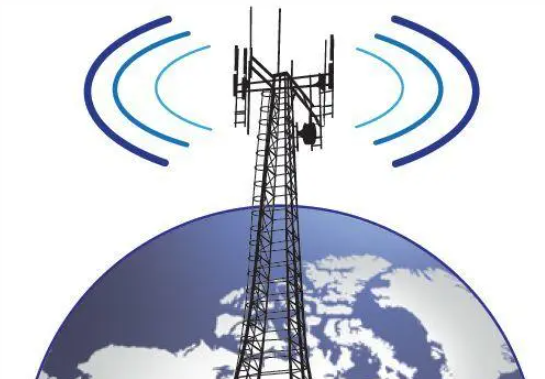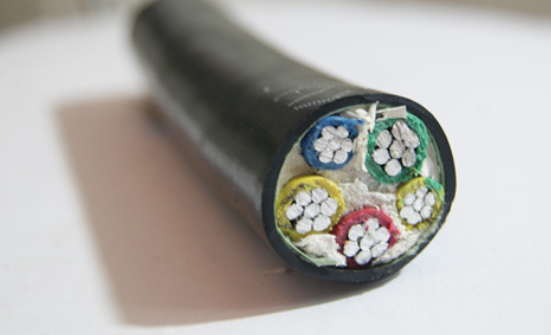What is a Coaxial Cable?
Coaxial cable refers to a cable with two concentric conductors, and the conductor and the shield share the same axis. The most common coaxial cable consists of a copper conductor isolated by an insulating material, and on the outside of the inner layer of insulation is another ring conductor and its insulator, and then the entire cable is covered by a sheath of PVC or Teflon material.
What is RG?
"RG" stands for "Radio Guide" and is a designation for a type of coaxial cable. The RG designation was originally used by the military to specify the characteristics of coaxial cables used in military radio frequency (RF) systems. Over time, the RG designations have been adopted for various types of coaxial cables in commercial and consumer applications. The RG number indicates the specific electrical, physical, and performance characteristics of the coaxial cable, such as impedance, insulation material, and maximum operating frequency.

Overview of RG6 Coaxial Cable
RG-6 is one of the specifications of coaxial cable, is 75 ohm series cable, using physical foamed polyethylene insulation, with good high frequency performance, low attenuation, good consistency, small bending radius, not easy to be damp, stable structural performance, long service life and other characteristics, widely used in cable TV trunk, branch lines and user lines and other electronic devices.
Overview of RG59 Coaxial Cable
The structure of RG59 coaxial cable is mainly composed of inner conductor, insulating medium, braided shielding layer and outer sheath. The inner conductor is usually a single or multiple copper wire that transmits the signal. The insulating medium is made of polymer materials such as polyethylene or polyvinyl chloride, which is used to isolate the inner conductor and the outer shielding layer to prevent signal interference. The braided shielding layer is made of aluminum-magnesium alloy braided net, which has good electromagnetic shielding effect and can effectively prevent the influence of external electromagnetic interference on the signal. The outer sheath is made of weather-resistant materials such as PVC or rubber to protect the cable from the erosion of the external environment.
RG59 coaxial cable is a kind of transmission wire widely used in radio and television, security monitoring, wireless communication and other fields. Because of its excellent transmission performance and stable and reliable characteristics, RG59 coaxial cable has been widely used in various transmission systems.
Differences Between RG59 and RG6 Cables
|
Specifications |
RG6 |
RG59 |
|
Impedance |
75ohms |
75ohms |
|
specification |
RG6/U |
RG59/U |
|
Outside diameter |
About 6.9mm |
About 6mm |
|
Inner conductor |
18AWG(0.75mm)Copper wire |
18AWG(0.75mm)Copper wire |
|
Insulating layer |
Solid Polyethylene |
Foamed polyethylene or Solid Polyethylene |
|
Shielding layer |
dual-layer aluminum foil and braided shield |
tin-plated copper braid shield or aluminum foil shield |
|
outer jacket |
PVC or PE |
PVC or LSZH |
|
Applications |
Versatilem and can be used for both indoor and outdoor installations. Such as cable TV, satellite TV and broadband Internet applications |
Suitable for indoor installations, often used in analog video applications such as closed circuit television systems and older TV installations that may not be suitable for high-frequency data transmission. |
|
Features |
It has low signal loss and high bandwidth capability, suitable for high-frequency transmission. |
It provides good signal quality over short distances and is cost-effective for some applications. |
According to the above parameter differences, the differences and advantages ofRG59 and RG6are as follows:
Benefits of RG6:
1 One of the differences between RG59 and RG6 cables is the specification of the copper wire used. The RG59 wire has very little copper content, is thin, and does not have the excellent ability to carry high-bandwidth content. RG6 is the cable industry standard that allows data transmission and loads of hundreds of TV signals. At a time when cable operators offered only a handful of stations and TVS were only available in standard definition Settings, RG59 was used to connect TVS in homes across the country. However, with the dramatic growth of TV channels, high-definition content and high-speed Internet, RG59 is not enough to meet transmission needs.
2 The RG6 cable has a better insulation layer than the RG59, which shows that the RG6 is designed to pay more attention to the quality and stability of signal transmission. Thicker insulation can provide better protection and reduce the impact of external interference on signal transmission, thus maintaining the stability of signal quality. Therefore, RG6 cable is usually suitable for application scenarios requiring high-frequency transmission and long-distance transmission, such as digital television, satellite television and broadband Internet, and is suitable for application scenarios requiring high-quality signal transmission.
3RG6 cable is usually used to transmit antenna signals, such as satellite TV, cable TV, etc. RG6 cable design is more suitable for high frequency transmission, with lower signal loss and better shielding effect, suitable for application scenarios requiring high-quality signal transmission.
Benefits of RG59:
1 The RG59 cable performs better than the RG6 at 50MHz, and at low frequencies, the RG59 is able to provide lower signal attenuation and better transmission performance.
2 RG59 cables are commonly used to transmit video signals, such as closed-circuit television (CCTV) systems, surveillance cameras, etc. Because the RG59 cable is designed for lower frequencies (such as video signals) and costs less, it performs well in video transmission.
How to chooes a right Coaxial Cable
With the growth of wireless and high-speed data applications, the use of coaxial cable has surpassed traditional video and telecommunications cables. It is widely used in homes, offices, telecommunications facilities, railway platforms, industrial plants, and government/public safety facilities. The diversity of applications has led to the diversity of coaxial cable types, grades and manufacturers. Choosing the right coaxial cable is crucial to avoid possible problems during installation. The following are some issues that need attention when purchasing coaxial cables.
- Impedance matching
The impedance of the coaxial cable is an important parameter, and its value is generally 50 or 75 Ω. When using a coaxial cable, ensure that the impedance of the cable matches that of the device; otherwise, signal loss and transmission quality may be caused. Although sometimes 50 ohm or 75 ohm can also be cross-used, 75 ohm cables are usually used for video applications, while 50 ohm cables are more commonly used for data and wireless purposes. The type of device and device that needs to be connected determines the cable impedance that needs to be used.
- Loss and transmission distance
Different types of coaxial cable will have a certain signal loss in transmission, so it is necessary to choose the appropriate coaxial cable according to the specific needs. If a signal needs to be transmitted over a longer distance, a coaxial cable with less loss should be selected.
- Transmission rate
The transmission rate of coaxial cable is related to signal loss, and in general, the higher the transmission rate, the greater the signal loss. If you need to transmit high-speed data, you need to choose a coaxial cable with a higher transmission rate.
- Environmental adaptability
Coaxial cables also need to adapt to different environments, such as indoor, outdoor, underground, etc. When selecting a coaxial cable, select the cable according to the actual environment.
- Price factor
The price of different types of coaxial cable varies greatly, and the appropriate coaxial cable needs to be selected according to the actual demand and budget.
- How to wire
Different applications often have very different wiring requirements. The wiring requirements for large outdoor industrial environments are different from those in machine facilities or aircraft fuselages. From cabling in equipment assemblies to cabling in complex buildings, there are coax cables to meet the needs of almost any environment. For the specific wiring type, coaxial cable has several technical parameters to measure whether it can meet the requirements, including: bending radius, maximum load or unsupported wiring conditions, wind load, and a variety of environmental factors and ratings. Normally, such information should be provided to the cable purchaser, otherwise the exact details of the cabling requirements can have as much importance as the electrical performance of the cable. Because some applications make the operation of wiring rough, different sheathing materials and protective layers are also often used to assist cable installation.
In short, choosing the right coaxial cable needs to consider a number of parameters, such as impedance, loss, transmission rate, environmental adaptability and price. Choosing the right coaxial cable according to different needs can better meet the needs of practical applications and improve transmission quality and efficiency.
Here is an useful video:








